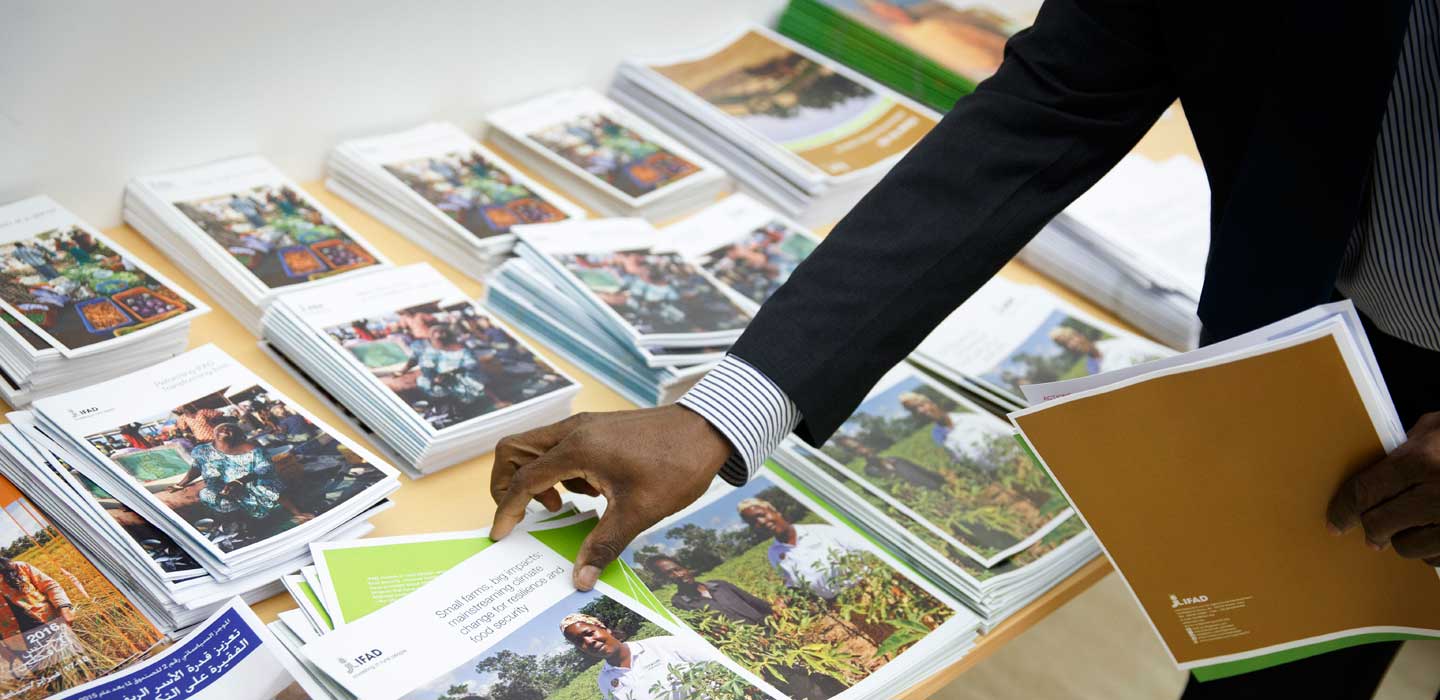Factsheets

صحف الحقائق
عرض القائمة
Search Results Filters
نتائج البحث
ASAP Malawi factsheet
يناير 2017
Malawi is a densely populated landlocked country with a population of 17.7 million. Its population growth is about three per cent per year, and it has one of lowest GDPs in the world, with a human development index (HDI) ranking of 174 out of 187 countries. Many Malawians (51 per cent) live below the poverty line of US$1 per day, and this poverty incidence is mainly rural (85 per cent). Endemic poverty has also led to chronic food insecurity and malnutrition for 2.8 million Malawians, combined with HIV/AIDs prevalence of nearly 12 per cent.
Mapping nutrition-sensitive interventions in Eastern and Southern Africa
ديسمبر 2016
The purpose of this study is to map nutrition-sensitive interventions in IFAD-funded projects in the ESA region, and to provide guidance for effective nutrition mainstreaming operations.
The specific objectives are to:
(1) map the various interventions used in delivering nutrition-sensitive activities;
(2) identify pathways for nutrition outcomes;
(3) evaluate the scale and scope of intervention implementation;
(4) assess the effect of the project on beneficiaries;
(5) identify and map areas of opportunities for scaling up;
and (6) identify challenges, weaknesses and gaps.
Investing in rural people in the Kingdom of Morocco
نوفمبر 2016
Since 1979, IFAD has financed 14 rural development projects for a total of US$268.6 million.
Investing in rural people in the Philippines
نوفمبر 2016
More than half of the Philippines’ 100 million people live in rural areas and many of them are poor. Agriculture is the primary and often only source of income for poor rural people, most of whom depend on subsistence farming and fishing for their livelihoods. Illiteracy, unemployment and the incidence of poverty are generally higher among indigenous peoples and people living in upland areas.
Addressing climate change in Eastern Africa through evergreen agriculture
أكتوبر 2016
Declining soil fertility, escalating costs of farm inputs and lack of capacity are persistent problems that farmers in eastern Africa continue to grapple with. Such factors have resulted in high levels of poverty and food insecurity due to poor performance of the agriculture sector. Climate change adds a big blow to the already bad scenario with serious ramifications on the smallholder-farming subsector. The region is predicted to experience warmer temperatures and decreased rainfall from June to August by 2050. This being an important season for food production in countries such as Kenya and Ethiopia, adaptation measures are necessary for sustainable food production. Evergreen Agriculture refers to the practice of incorporating selected trees and/or shrub species into annual cropping fields. It can be practiced under conventional farming practices but ideally seeks to combine agroforestry with the principles of conservation farming. Evergreen agriculture practices are now part of the solution to tackle climate change and the adoption is on a rising trend in several countries in the region. Conservation Agriculture, including agroforestry, specialty crops, and permanent cropping systems, promotes food sufficiency, poverty reduction, and value added production through improved crop and animal production and production in relation to market opportunities.
Smallholder pig value chain development project
أكتوبر 2016
Developing smallholder pig value chains in Uganda to increase rural incomes and adapt to climate change.
Banana and plantain improvement
أكتوبر 2016
Bananas (Musa spp.), including dessert banana, plantain and cooking banana are the eighth most important food crop in the world, and the fourth most important in least
developed countries (FAOSTAT, 2013). They are produced in 135 countries and territories across the tropics and subtropics. The vast majority of producers are smallholder farmers
who grow the crop for either home consumption or local markets. Less than 15 per cent of the global production of more than 130 million metric tons is exported. Today, the
international banana trade, totaling around 17 million metric tons, is worth over US$7 billion per year (FAOSTAT).
developed countries (FAOSTAT, 2013). They are produced in 135 countries and territories across the tropics and subtropics. The vast majority of producers are smallholder farmers
who grow the crop for either home consumption or local markets. Less than 15 per cent of the global production of more than 130 million metric tons is exported. Today, the
international banana trade, totaling around 17 million metric tons, is worth over US$7 billion per year (FAOSTAT).